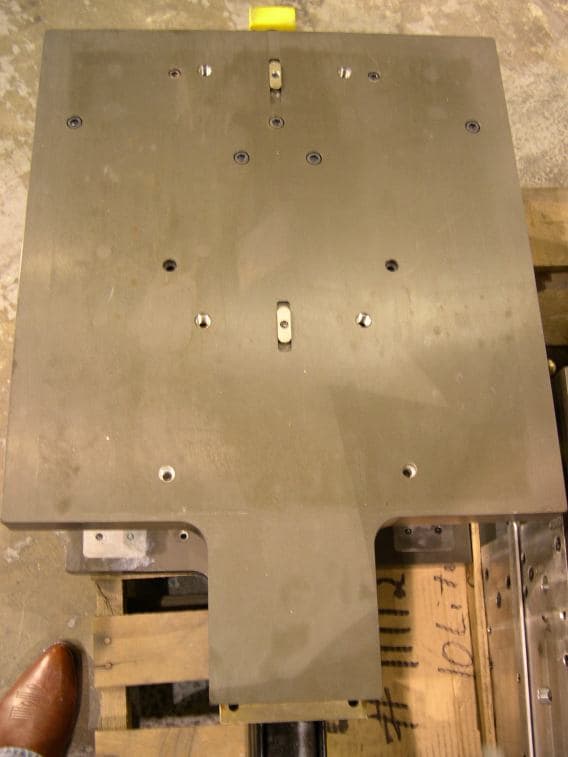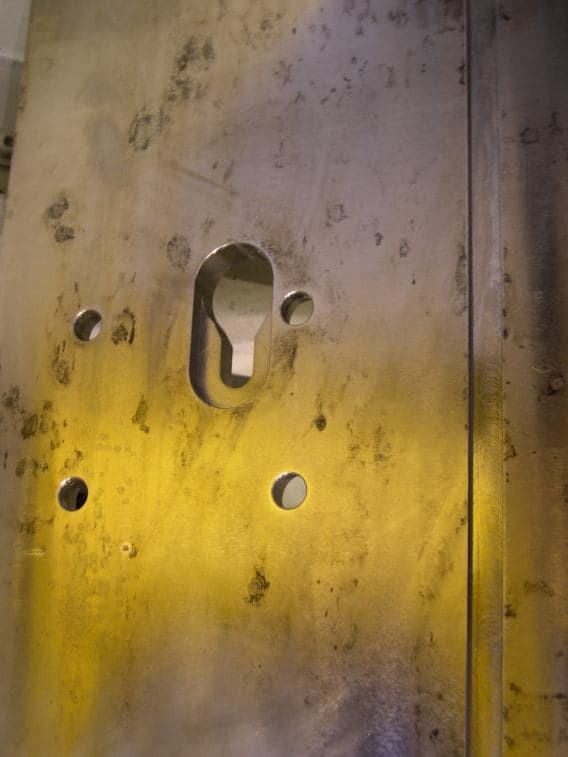
-----
Corrosion between Hard Anodized aluminum and Nickel Plated surface
Hard Anodized Aluminum Mold Backing Plate and Nickel Plated Quick Change Plate sweat in manufacturing environment, allowing moisture to become trapped between them. Nickel Plated item exhibits staining (corrosion) during Mold changes which is unsatisfactory to customers.

The anodized backing plate.

The corroded nickel plated quick change plate (the yellow area is just a reflection)
Blow Moulding - Williamston, Michigan, USA
2005
Nickel exposed to air starts to oxidize, starting at light yellow, then dark yellow, then light brown, then dark brown, and finally black. Heat accelerates this process. Moisture accelerates this process.
Try topping off the nickel with about 0.0005 inch thick hard chromium. If you are old enough to remember chrome plated auto bumpers, it was the chrome on top that kept the nickel from turning black.

Robert H Probert
Robert H Probert Technical Services
Garner, North Carolina

2005
A 0.0005" thick chrome plate over the existing nickel? Yes, I agree. But maybe it would be just too expensive, or require a different source. Nickel does oxidize, but in your picture it looks like it was the steel beneath the nickel that was affected by a very thin and perhaps improperly applied protective layer. Most likely, your existing nickel doesn't even reach that total thickness. It's common for mold platers not to pay much attention to these components to focus on the mold.
Guillermo MarrufoMonterrey, NL, Mexico
2005
Q, A, or Comment on THIS thread -or- Start a NEW Thread
